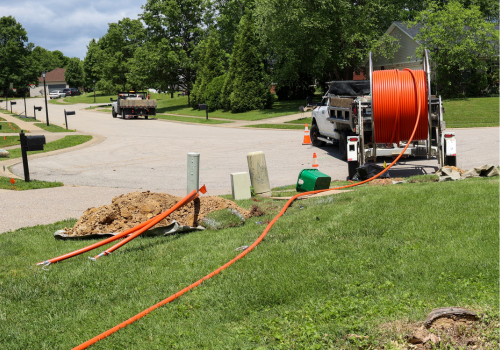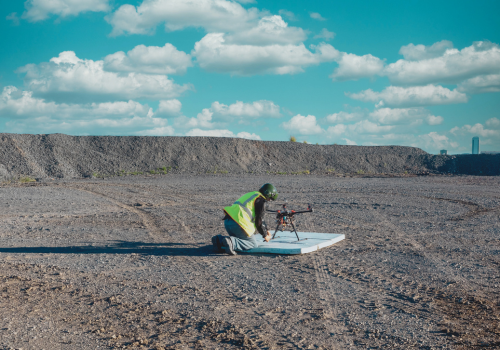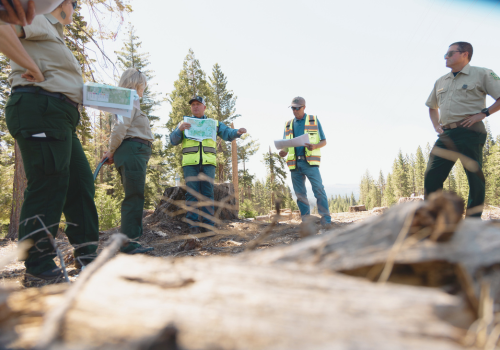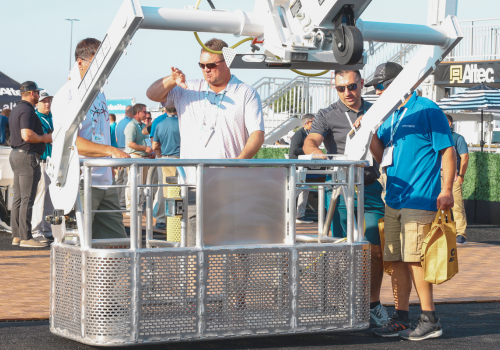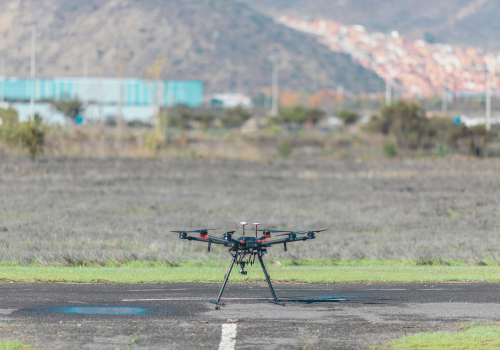Underground utility workers require a variety of equipment to perform their jobs.
Here are some of the top 10 pieces of equipment that will make underground utility workers more productive this year.
1. Trucks
The first piece of equipment an underground utility worker needs is a truck; these people often work outdoors in various locations, and sometimes in remote locations and on rough terrain. So a truck is necessary to transport them and their equipment—something with a lot of smaller compartments ideal for handheld tools and a large, open space to place larger equipment, such as a cable plow or trencher. Truck bed options include an open bed and van body; you also have the option of trailering it. The size of the equipment will heavily influence choice.
2. Excavators
Excavators are well-rounded and versatile machines that are also very capable of efficiently digging trenches. Minimize the amount of earth removed and placed back by matching the bucket width to the desired trench width.
3. Trenchers
A trencher attachment looks like a gigantic chainsaw. The rest of the trencher looks like one of the following depending on its size: a walk-behind track loader, a farm tractor, or a tracked loader. Trenchers cut through the earth to the desired depth, leaving piles of earth on either side of the trench.
4. Cable plows
Cable plows are used on various kinds of installations by either feeding the utility into the ground or pulling it in.
“When feeding a utility, the product goes down the back of the blade and then it comes out of the bottom of that blade. Think of using a knife to cut and pry open the ground and then feed the product into the ground. You walk the installation path with the machine and the machine installs it as it goes. The other method is pulling it in, which involves hooking the product to the bottom of the blade and then the machine pulls it into the ground. Fiber is too fragile to be pulled in, so it must be fed. But electrical and regular inner duct can be pulled in,” says Bart Clark, President, Maverick Inc.
Maverick Inc. has been serving the utility industry for nearly three decades, and is a Lineward lawn plow licensed dealer, and seller of used, refurbished Ditch Witch trenchers and directional drills, as well as new and used parts for Ditch Witch machines. They also sell reel trailers from singles to four reel trailers and everything in between. They produce and market the Maverick Tile Finder that can find underground field tiles.
“The Lineward lawn plow is designed to install anything up to 16 inches deep. It’s unique compared to other cable plows because its blade is located at the center of the machine, instead of at the rear, which more evenly distributes weight, so you don’t tear up the ground as much as traditional plows. The ground disturbance is so minimal, it can be hard to see,” says Clark.
5. Horizontal directional drills
A horizontal directional drill (HDD) is a form of Trenchless technology, which is safer, less time-consuming, and less costly than trenching. Plus, you don’t have to tear up the surface area.
“The significance of Trenchless technology is the ability to avoid digging up the surface. Let’s say you need to install a utility line and its path runs alongside a road. With Trenchless technology, you can drill through the earth up to 1500 feet and then pull back your product. And you only need to have periodic holes in the road, instead of closing down the road and digging it up,” says Clark.
“Or, if a person has a perfectly manicured lawn with nice flower beds and they need to get electrical to the house. Without Trenchless technology, you would dig through everything and mess it up,” continues Clark. “Now we can drill underground to the house and leave the surface undisturbed. With Trenchless technology, you will have a one-foot-by-one-foot-by-two-foot-deep hole by the house and by the drill. That’s it! Everything else in between is untouched on the surface. Trenchless saves a lot of time and money on clean up.”
6. Duct rodder
Utility contractors use a duct rodder for laying cable or wire within a conduit by threading the cable or wire through the conduit.
7. Reel Trailers
This trailer is equipped with one to four reels (gigantic spools). The utility— inner duct, fiber, cable, gas or irrigation coil pipe, stick pipe—are wrapped around the reels. When it’s time to install, haul the trailer into place and attach the utility to the installation equipment.
8. Locators
A locator finds utilities underground by using electromagnetism or ground penetrating radar (GPR). With this equipment, utility workers can locate a pipe, for example, and even find spots where the pipe is damaged.
9. Pipe crawlers
These are similar to remote control cars, but very narrow and come equipped with a camera and a light. Utility workers use them to inspect the interior of pipes for blockages, damage, and weakness in the pipe.
10. Snake machines
A snake machine (also called a drain auger) helps unblock pipes. Feed the head of the snake down the pipe from the surface, and keep feeding the snake until you’ve reached the blockage.
Subscribe to The Utility Expo monthly newsletter to receive more industry insights like this.
Read Next
Equipment Every Utility Worker Needs for Working in the Winter


